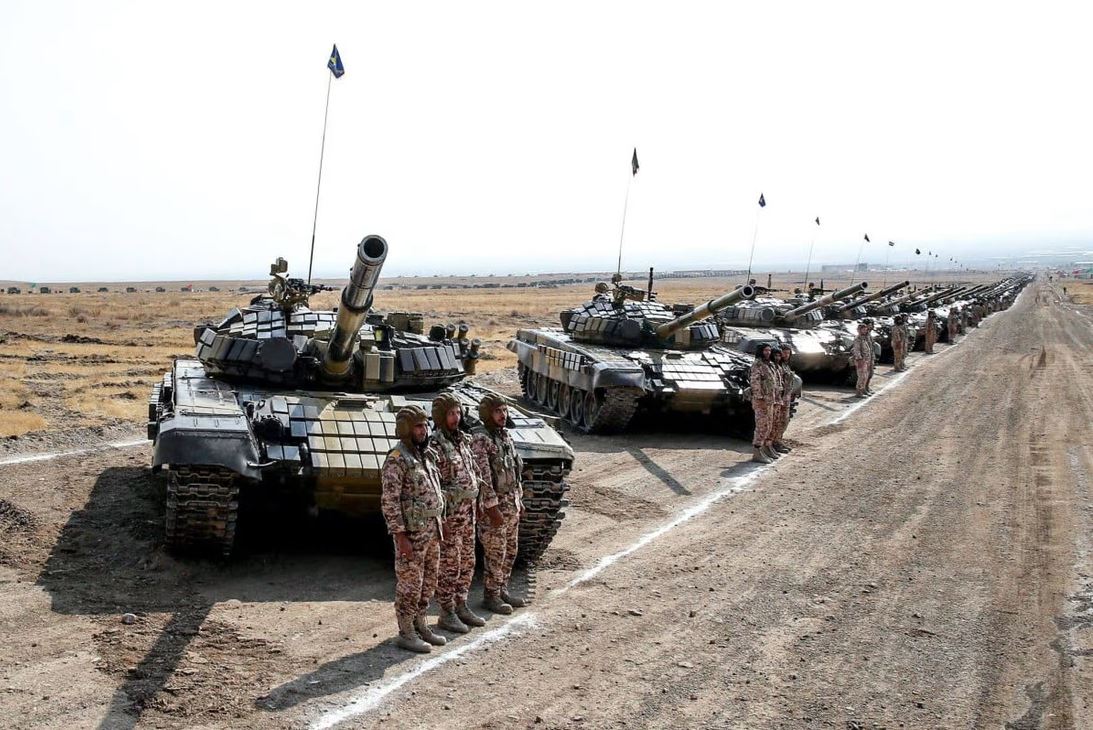Executive Summary
On 1 November, an article by the Wall Street Journal discussed Saudi intelligence indicating an “imminent attack” by Iran against targets in the KR-I and Saudi Arabia. The report states that, in response to the threat, US forces and “others in the Middle East” raised the alert level of their military forces. US officials acknowledged the report and cited concerns, but without officially confirming threats of an imminent attack.
Absent further details, the veracity of the threat is difficult to verify yet the report has generated significant attention. Absent further clarification, the warning is worth viewing in the context of relevant regional threat considerations, including assessed Iranian-government frustrations about the ongoing protest wave, the US-Saudi split over oil production, and the expiration of the truce in Yemen. Regardless of its veracity, the report remains relevant and may well see precautionary security measures over the near term in the region.
Saudi Arabia warns of “imminent attack” by Iran against Erbil and Saudi Arabia
On the evening of 1 November, the Wall Street Journal published an article discussing a threat report from Saudi Arabia citing specific intelligence of an “imminent attack” against targets in Saudi Arabia and Erbil, Iraq. According to the report, the would-be attack(s) comprise an attempt by Iranian officials to distract attention from ongoing nationwide protests within Iranian borders.
Further details of the imminent threat and corresponding security responses were not initially discussed however a US official cited by AP news said the intelligence described a credible threat of an attack “soon or within 48 hours.” The report also cited a spokesperson for the US National Security Council (NSC) acknowledging the Saudi report and expressing concerns about the “threat picture” while emphasizing the US’ readiness to “act in the defense of our interests and partners in the region.” Department of Defense Spokesperson John Kirby and State Department Spokesperson Ned Price likewise cited concerns about the threat situation, but without elaborating further.
Absent further details, the veracity of the threat report is difficult to verify however the warning and subsequent statements by US officials generated significant attention. US officials have not publicly corroborated or confirmed any expectations of an imminent attack. No security alerts or indications of elevated threat levels have been issued by US consulates or embassies in the region, with no changes observed beyond standing security considerations in Iraq and Saudi Arabia. Regardless of the report’s validity, elevated security precautions may be enacted out of an abundance of caution over the near term.
Context and considerations – Iranian protests
As with any unspecified threat reports, it remains important to consider the Saudi claim in context, with a number of relevant factors which should be taken into consideration. Arguably the most significant factor is an elevated threat level previously assessed in relation to ongoing protest events in Iran and related Iranian accusations of foreign interference.
This week, the head of the Islamic Revolutionary Guard Corps (IRGC) warned that 29 October would be the “last day” of the protests. The statement was widely interpreted as an ultimatum by the government; however the immediate effects were limited as protests escalated in several cities and university campuses, repudiating the authority of the IRGC. Such escalation has previously been identified as one of a number of trigger points influencing the potential resumption of Iranian targeting of Kurdish separatist groups perceived to be operating within KR-I borders (see full report for further context). That said, barring a significant shift in previous patterns, any IRGC targeting within the KR-I against Iranian Kurdish separatist groups is expected to remain limited to indirect fire in areas along Erbil-Iran borders, and to a lesser extent, airstrikes targeting relevant locations in areas outside of major urban centers.
Meanwhile, the Iranian government continues to accuse foreign countries – including the US and Saudi Arabia – of instigating the protests. Last month, Tehran openly demanded that Saudi Arabia should reign in its Persian-language media coverage of the protests in an assessed reference to the Saudi-linked, London-based Iran International. Related accusations pertain to allegations of Saudi support for separatist movements in Khuzestan and Sistan Baluchistan province. These accusations remain predominantly rhetorical, yet should be considered in the context of wider threat atmospherics directed at Saudi interests as long as the protests continue.
Saudi-US divisions over OPEC+ cuts
For Saudi Arabia, other key considerations for this threat report relates to efforts to exert political pressure on US counterparts, and an ongoing dispute over oil production cuts by the Saudi-led OPEC+. On 11 October President Biden threatened “consequences” for Saudi Arabia in response to a decision to cut oil production in a perceived bid to aid Russia and potentially influence the US mid-term elections.
As previously discussed in the Talos Regional Report, such consequences remain unstated but are assessed to potentially include a temporary freeze or reduction in strategic arms sales, possible removal of an anti-missile system currently deployed on Saudi and UAE territory, or the removal or reduction in US troop presence within the kingdom. By highlighting an “imminent attack” in the 1 November report, Saudi officials may be seeking to increase pressure on US officials to abandon or reconsider any “consequences” which could be directly linked to the defense of Saudi territory or assets.
Expiration of Yemen truce and concerns over Houthi-linked attacks
Finally, the threat warning follows the recent expiration of the six-month truce in Yemen and associated concerns over a resumption of Houthi-linked long-range strikes against strategic assets on the Saudi mainland. To recall, such strikes were commonplace prior to the truce and included the repeated targeting of oil refineries, desalination facilities and airports, including in Jeddah, Riyadh, and cities primarily located near the Yemen border.
The truce expiration in early October did not result in an immediate resumption of such strikes, however last week, two explosive-laden UAVs impacted near a Greek-flagged oil tanker outside the port of Dabba, in Hadhramaut province, southern Yemen. The Houthi Movement claimed responsibility for the attack and threatened further operations against the Saudi-led coalition, thus fueling concerns over renewed cross-border strikes. While such operations should primarily be viewed in the context of the Yemen conflict, the strategic calculations involved in the Houthi-linked strikes on the Saudi mainland remain inevitably shaped by wider regional dynamics and Iran-Saudi tensions. The expiration of the truce thus makes a resumption of long-range, Iran-linked attacks against Saudi Arabia more likely over the near term. It is plausible that Tehran may utilize the movement as a proxy to channel frustrations and convey strategic threat messaging in response to allegations of Saudi support for the nationwide protests.
Attacks expected to conform to historic trends
Any near-term attacks are widely expected to conform to established patterns in both Iraqi Kurdish Region and the Kingdom. In Iraq, such targeting recently comprised of cross-border indirect fire targeting border areas of Erbil province, as well as subsequent one-way UAVs and surface-to-surface missiles Erbil and Sulaymaniyah provinces. Further discussion of specific attacks and analysis is available in the full report.
In Saudi Arabia, such attacks typically involve single UAV and ballistic missile strikes against oil refineries and airports in southern Saudi Arabia. The most significant operation in recent years includes the Abqaiq-Khurais attacks on 14 September 2021, which were claimed by the Houthi Movement but blamed on Iran and which, if repeated, would constitute an unlikely but very significant escalation from Tehran.
A more plausible and controlled escalation would involve coordinated operations affecting multiple targets simultaneously or repeated attacks conducted over several days, as seen in 2021 and early 2022. Generally speaking, the vast majority of such strikes have not resulted in civilian casualties, however noteworthy exceptions include attacks against Abha International Airport and long-range strikes against Riyadh in 2021 that produced bystander casualties.
Further developments will be monitored closely. Given the above considerations, Saudi reports of an imminent attack in Erbil and the Kingdom remain relevant and may well see precautionary security measures over the near term. Even so, absent further clarification, the overall threat remains in line with previously assessed potential for Iran-linked attack events and is expected to remain in line with existing client mitigation measures.

